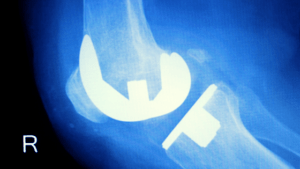Not every patient who comes to pediatric ED can absolutely explain what’s weakening them. This is particularly true with pediatric practices. It’s again important to know how to use Pediatric ED coding procedures for highest reimbursement rates. Not every healthcare professional or practice can succeed in achieving their targeted revenue payments. There are few scenarios to follow and get maximum profits out of them.
In order to make sure that you can accurately assign the right codes for your pediatric visits in the ED, check out the following quiz questions and see if you can come up with the most accurate answers.
In Pediatric ED coding, can you code wart removal using multiple methods?
Scenario-1: When the ED physician removes a wart from a 6-year-old patient’s hand: They first pare down the wart and then use chemosurgery to finish the removal. In this situation, can you bill for both the paring and the cryotherapy with 11055 and 17110? Or should you bill this in another way?
- Answer:Even though there is no National Correct Coding Initiative (NCCI) edit preventing you from doing so, it would not be appropriate to bill 11055 (Paring or cutting of benign hyperkeratotic lesion (eg, corn or callus); single lesion) with 17110 (Destruction (e.g., laser surgery, electro-surgery, cryosurgery, chemosurgery, surgical curettement), of benign lesions other than skin tags or cutaneous vascular proliferative lesions; up to 14 lesions) in this situation.
- That’s also because one should only code the procedure that actually led to the wart’s removal. While the paring may have contributed in destroying the wart the final part of the process that removed the patient’s wart completely was the chemosurgery. So, in this situation, you would bill the more comprehensive procedure, which would be the 17110.
How to report Conjunctivitis?
Scenario-2: If a parent comes to the ED with a child who has an itchy eye that was
“stuck-closed” when she woke up: The ED physician evaluates the patient and records a diagnosis of conjunctivitis. Which code applies?
- Answer: This particular frequently seen pediatric eye condition is trickier to code because it is “divided into two categories: infectious, which can be viral or bacterial, or noninfectious, such as conditions caused by allergies or a foreign body,” explains Donelle Holle, RN, President of Peds Coding Inc., and a healthcare, coding, and reimbursement consultant in Fort Wayne, Indiana.
- Coding alert: Very importantly, “if the provider has not stated if it is viral or bacterial, it is important for the coder/biller to query the provider to see what they believe is more appropriate to use,” Holle advises.
- These forms of the condition are coded to the B30 group. To narrow down the code, your ED provider will have to order a test to determine which virus has caused the below conditions:
Adenovirus: Infections caused by adenovirus serotypes 8, 19, and 37 are coded to B30.0 (Keratoconjunctivitis due to adenovirus), while infections caused by
adenovirus serotypes 3, 4, and 7 are coded to B30.2 (Viral pharyngoconjunctivitis).
All other adenoviral conjunctivitis conditions are coded to B30.1 (Conjunctivitis due to adenovirus).
Enterovirus: Infections caused by coxsackievirus A24 and enterovirus 70 are coded to B30.3 (Acute epidemic hemorrhagic conjunctivitis (enteroviral).
Bacterial: The most common form of conjunctivitis, usually known as pink eye, is
coded to H10.01- (Acute follicular conjunctivitis). “To code this properly, you need to
state which eye is affected, like the scratched cornea codes,” Holle says.
- Here, one can find six digits – 1 for the right eye, 2 for the left and 3 for both. It’s important for your provider to stipulate which eye is involved instead of using the nonspecific code, documented with sixth digit 9.
- Chronic forms of the condition are coded to H10.43- (Chronic follicular conjunctivitis). As with all ICD-10 codes, there are no time limits designated for acute or chronic conditions. You will have to rely on your pediatric ED coding provider’s judgment and documentation to make this determination.
- Just like the acute form of pink eye, one should also specify laterality.
Allergic: “This is commonly referred to as red eye because the eye itches and drains. It is treated with topical antihistamines,” explains Holle. Again, depending on your physician’s documentation, this is commonly coded to H10.1- (Acute atopic conjunctivitis), though chronic allergic conjunctivitis can be coded to H10.44 (Vernal conjunctivitis) if the patient is allergic to airborne allergens, or even H10.45 (Other chronic allergic conjunctivitis).
What is that long-term drug therapy to involve in Pediatric coding?
Scenario-3: A father brings his 8-year-old daughter to the ED with concerns about her psychological state. He refers to her long-term use of ADD medication. Should you use Z79.899? And what do the terms “long term” and “current” mean in the code’s descriptor?
Answer: One would use Z79.899 (Other long term (current) drug therapy) when, at the time of an encounter, a patient is taking a particular medication (satisfying the term “current”) and has been taking the medication over an extended period of time (satisfying the term “long term”). So, you would not use the code for a patient who is yet to be prescribed, or has only just begun using the medication.
- Additionally, while there is no time period associated with the code, use of the code is generally reserved for medications used to treat chronic conditions or conditions that may not resolve any time soon. In other words, you would also not use Z79.899, or any of the Z79.- (Long term (current) drug therapy) codes for that matter, for a patient taking a medication to alleviate an acute, short-term illness that will resolve in the foreseeable future.
- Due to the help of medications, the conditions can come under control and they can cause some significant side effects. The ED physician will want to understand which parts of the patient’s behavior might stem from the medication and which might be independent. In this case, you can justify using Z79.899.
- The lifeline of the pediatric ED coding claims will be the documentation always. Not only does it allow your providers to track a patient’s progress over time, but it also allows you to collect revenue for the services you perform. Unfortunately, not every emergency department maintains pristine documentation.
To avoid the confusion of pediatric ED coding, it’s always better to choose outsourcing companies which do excellent work. Do find the best billing and coding companies to make the work easy and hassle free.
Hope you got enough information on Pediatric ED coding. For more queries and updates on healthcare, please subscribe to our blog.




